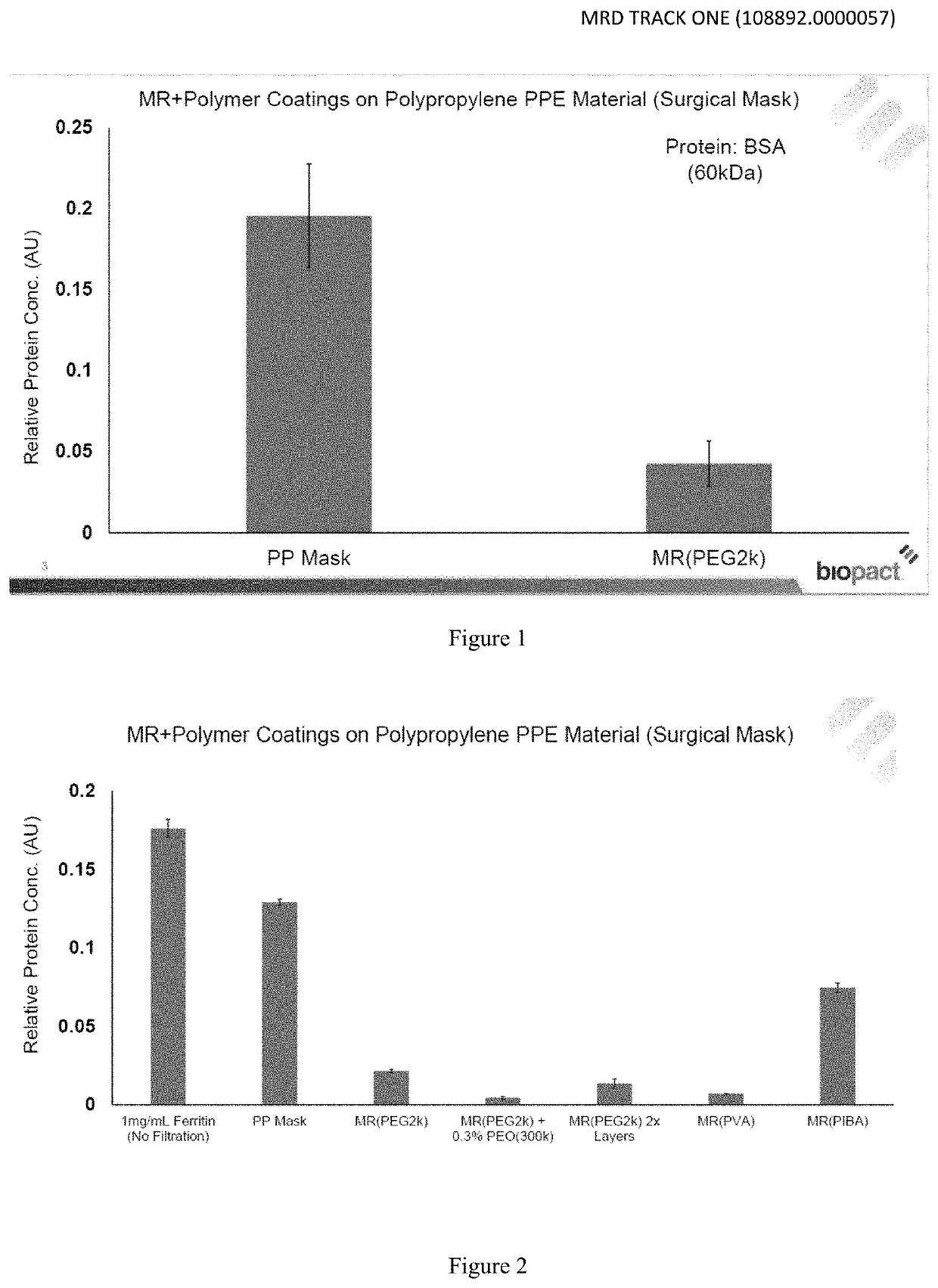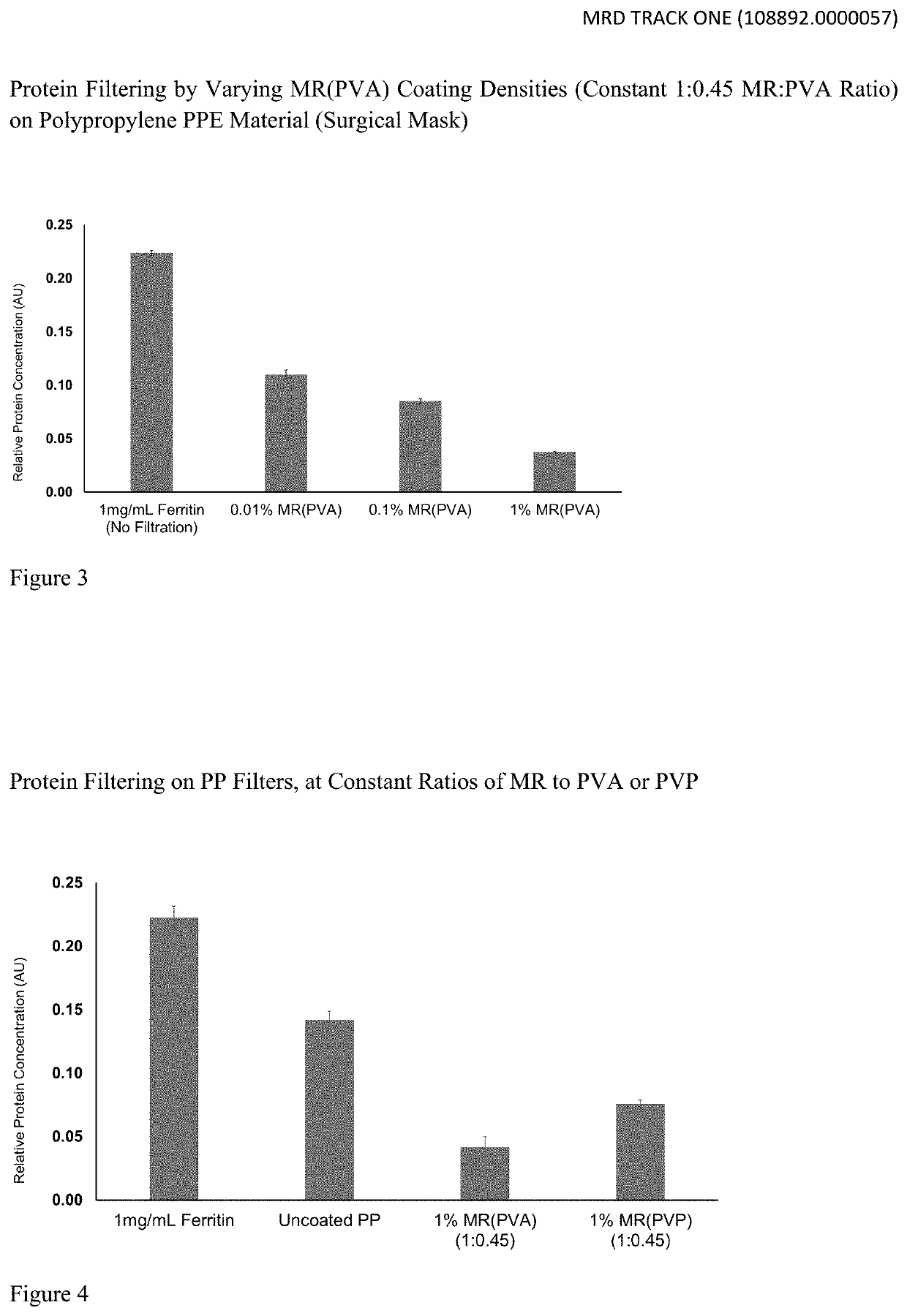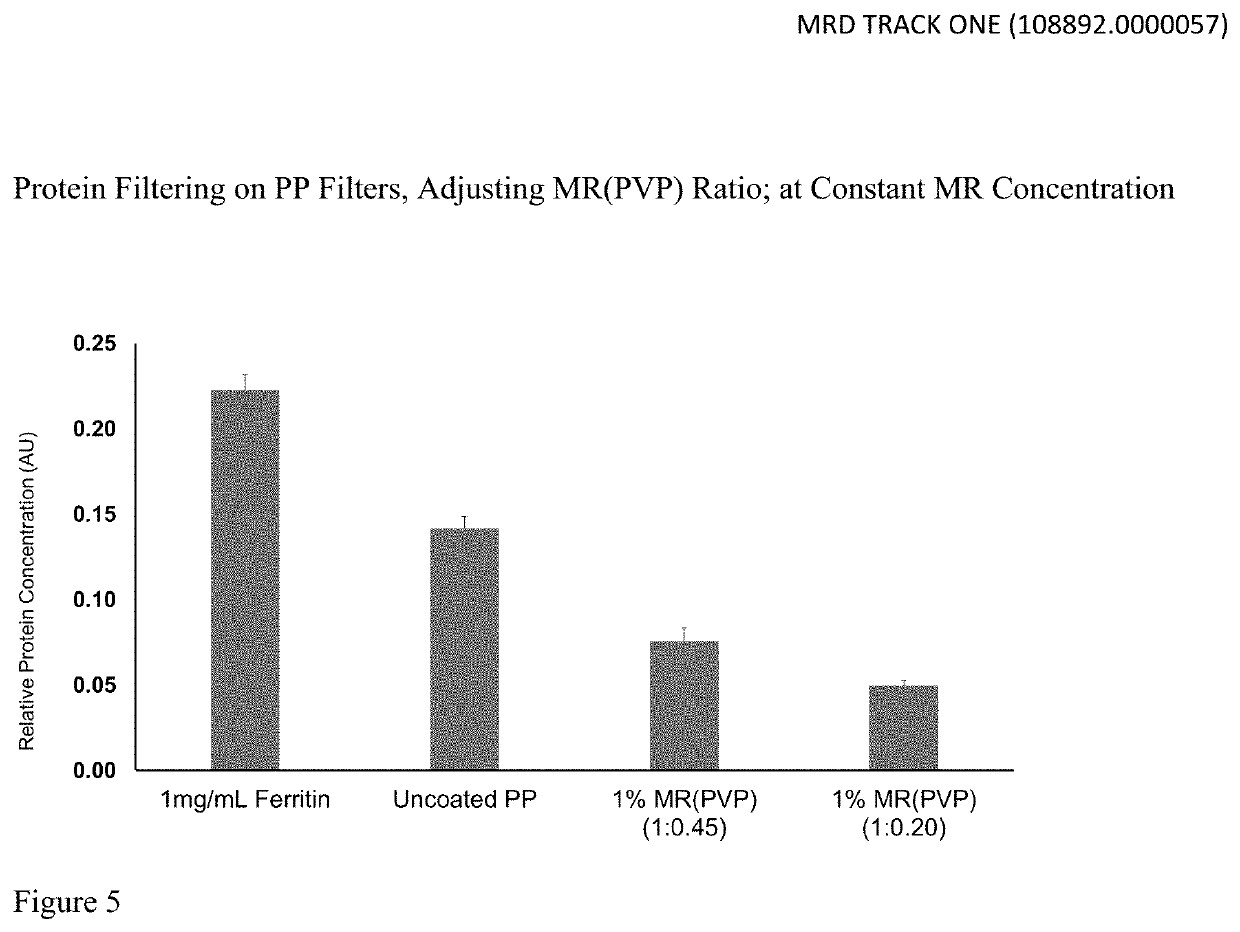Personal protective equipment with functionalized nanotube compositions to control pathogens such as SARS CoV-2 (coronavirus)
a technology of functionalized nanotubes and protective equipment, which is applied in the field of filtration fabrics, can solve the problems of hampered use of carbon nanotubes in these applications, and achieve the effect of high loading efficiency and delivery of higher quantities of drugs or peptides
- Summary
- Abstract
- Description
- Claims
- Application Information
AI Technical Summary
Benefits of technology
Problems solved by technology
Method used
Image
Examples
example 1
Oxidized as MWCNT-3 Hour (oMWCNT-3)
[0058]One hundred milliliters of >64% nitric acid is heated to 85° C. To the acid, 3 grams of as-received, multi-walled carbon nanotubes (C9000, CNano Technology) are added. The as-received tubes have the morphology of entangled balls of wool. The mixture of acid and carbon nanotubes are mixed while the solution is kept at 85 degrees for 3 hours and is labeled “oMWCNT-3”. At the end of the reaction period, the oMWCNT-3 are filtered to remove the acid and washed with reverse osmosis (RO) water to pH of 3-4. After acid treatment, the carbon nanotubes are still entangled balls. The tubes are dried at 60° C. to constant weight.
example 2
Oxidized as MWCNT-6 Hour (oMWCNT-6)
[0059]One hundred milliliters of >64% nitric acid is heated to 85 degrees C. To the acid, 3 grams of as-received, multi-walled carbon nanotubes (C9000, CNano Technology) are added. The as-received tubes have the morphology of entangled balls of wool. The mixture of acid and carbon nanotubes are mixed while the solution is kept at 85 degrees for 6 hours and is labeled “oMWCNT-6”. At the end of the reaction period, the oMWCNT-6 are filtered to remove the acid and washed with reverse osmosis (RO) water to pH of 3-4. After acid treatment, the carbon nanotubes are still entangled balls. The tubes are dried at 60° C. to constant weight.
example 3
Carbon Nanotube-Oxidize Outermost Wall (Out-dMWCNT)
[0060]In a vessel, 922 kilograms of 64% nitric acid is heated to 83° C. To the acid, 20 kilograms of as received, multi-walled carbon nanotubes (C9000, CNano Technology) is added. The mixture is mixed and kept at 83° C. for 3 hours. After the 3 hours, the acid is removed by filtration and the carbon nanotubes washed with RO water to pH of 3-4. After acid treatment, the carbon nanotubes are still entangled balls with few open ends. While the outside of the tube is oxidized forming a variety of oxidized species, the inside of the nanotubes have little exposure to acid and therefore little oxidization. The oxidized carbon nanotubes are then suspended in RO water at a concentration of 1.5% by weight. The RO water and oxidized tangled nanotubes solution is subjected to intensely disruptive forces generated by shear (turbulent) and / or cavitation with process equipment capable of producing energy densities of 106 to 108 Joules / m3. The resu...
PUM
| Property | Measurement | Unit |
|---|---|---|
| melt flow rate | aaaaa | aaaaa |
| melt flow rate | aaaaa | aaaaa |
| melt flow rate | aaaaa | aaaaa |
Abstract
Description
Claims
Application Information
 Login to View More
Login to View More - R&D
- Intellectual Property
- Life Sciences
- Materials
- Tech Scout
- Unparalleled Data Quality
- Higher Quality Content
- 60% Fewer Hallucinations
Browse by: Latest US Patents, China's latest patents, Technical Efficacy Thesaurus, Application Domain, Technology Topic, Popular Technical Reports.
© 2025 PatSnap. All rights reserved.Legal|Privacy policy|Modern Slavery Act Transparency Statement|Sitemap|About US| Contact US: help@patsnap.com



